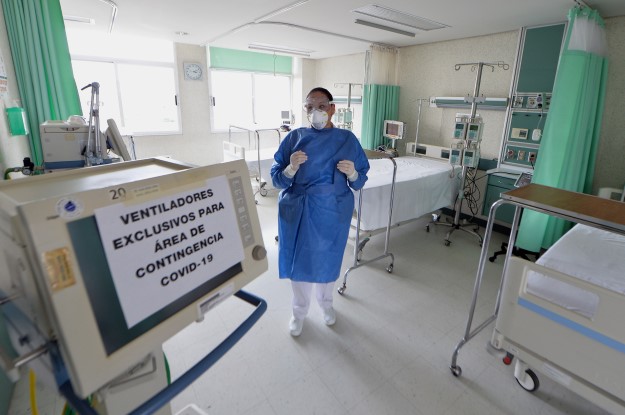It’s an oft-stated parallel that is worth repeating: A big oil discovery in a country is like winning the lottery. And what happens to lottery winners? Almost 70 percent of them declare bankruptcy within seven years.
Something similar happens to some countries after they strike it rich with natural resources. Massive inflows of money combined with weak institutions lead to fiscal profligacy, rent-seeking behaviors by elites, and widespread corruption. When commodity prices fall – and they inevitably do – political and economic crises ensue.
This “resource curse” can be avoided. One tool that can help is a sovereign wealth fund (SWF). When done right, SWFs can help countries collect, monitor and spend income from natural resources in a transparent and sustainable way. But without institutional backing and adequate control mechanisms, SWFs often fail to achieve their goals. Guyana – which could soon become Latin America’s next oil powerhouse – is working with the Inter-American Development Bank (IADB), the International Monetary Fund and the World Bank, among others, to craft a SWF.
Guyana at a critical juncture
The United States Geological Survey (USGS) has identified the Guyana-Suriname basin as having one of the highest resource potentials among unexplored oil basins in the world. A consortium led by ExxonMobil has discovered large reserves off the east coast of the country, adding to previous discoveries. This means that Guyana, with fewer than one million inhabitants, could start producing up to 120,000 barrels per day as soon as 2020 (three times Peru’s production in 2016). That number could top 450,000 barrels per day by the mid-2020s, almost equivalent to all of Argentina’s current oil production.
Oil income projections depend on how much the price fluctuates in international markets, and on the terms of contracts with extractive companies, which are usually not disclosed. But assuming a $50 per barrel reference price, Guyana’s oil industry income could be worth $2 billion in 2020, equivalent to more than 60 percent of the country’s GDP in 2017.
According to Guyanese officials, in the first couple years of operation, the country can expect to receive $380 million dollars per year in oil tax income. However, this amount could rise considerably after initial investment costs are recovered.
While oil does not last forever, Guyana will see its future development tied to oil wealth for generations. That is why the decisions Guyanese officials make regarding how to manage that wealth are so important.
The sovereign wealth fund: a fundamental tool
The number of sovereign wealth funds has grown exponentially over the last decade: There are now about 100 SWFs around the world, managing assets worth an estimated $7.5 trillion. According to some projections, by 2023 the global value of assets managed by SWFs could hit $12 trillion dollars.
Sovereign wealth funds collect income from the hydrocarbon production industry then, under strict control mechanisms, make resources available for countercyclical economic policies. They can reduce inflationary pressures associated with budget surpluses and also help fund projects that will contribute to a country’s sustainable economic growth.
These funds have become a fundamental tool in the development strategies of many countries. Norway’s NBIM – the largest SWF in the world – incorporates good corporate governance practices, including an ethics council and risk and achievement reports. Based on integrity and transparency criteria, the economic and financial performance of the NBIM has been exemplary. It is the first SWF to reach one trillion dollars in assets under management.
But not all SWFs are successful. In cases where good governance prevails (such as in Chile, Norway or New Zealand), an SWF can contribute to the country’s sustained growth and support fiscal stability. Where that is not the case, for example as in Equatorial Guinea and Angola, SWFs show poor results.
Thankfully, international standards and best practices for strengthening governance in extractive industries provide concrete ideas to help SWFs perform. The following recommendations, based partly on the work done by the IADB for Guyanese authorities, offer some examples.
Legal framework. It is important to establish a clear purpose for the SWF. This purpose can either be a stabilization fund (Chile), a pension fund (Alberta and Alaska), a development fund (Brazil) or a mixed objectives fund (the majority of SWFs). It is also crucial to define revenue flows and withdrawal conditions.
Institutional framework and governance structure. SWFs need to operate independently. All relevant entities that could have a role in the governance and management of the SWF – such as finance ministries or central banks – need properly defined responsibilities. A clear definition and separation of tasks and processes between ownership, management and oversight must be established.
Administration of risks and investments. It is essential to adopt incentive and control measures for the fund, as well as strict ethical standards for its officials, to avoid conflicts of interests or the disclosure of confidential information. Effective audit mechanisms that are independent from the executive branch are also good practices. This can be either internal (Chile) or external and internal (Norway), performed by third parties.
Will Guyana’s SWF be enough?
The SWF being set up in Guyana is an important institutional step with economic consequences, but ultimately represents part of a bigger puzzle. Guyana needs to act quickly to develop an institutional framework that will allow the government to administer the collection, management and investment of its new resources with transparency and efficiency. It also needs to strengthen the competitive allocation of its natural wealth, and be prepared to translate and disseminate the impacts (positive and negative) to Guyanese citizens.
Here is what Guyana can do to complement this agenda:
Implement the Extractive Industries Transparency Initiative (EITI). The EITI is a global standard that promotes open and accountable management of oil, gas and mineral resources. Guyana has been admitted as a candidate country, joining 10 other Latin American and Caribbean nations. Implementing the EITI standard entails regulating and overseeing the industry, and includes a call to develop an institutional framework to manage oil revenues.
Ensure a transparent and competitive bidding process to allocate future oil blocks. In this, some examples from the region can be useful. In Mexico, bidding processes for oil and gas exploration and production blocks can be monitored online. Clear rules mean that investors are more likely to trust the allocation process. Mexico is also a good example of including accountability mechanisms in oil contracts. Oil contracts are fully disclosed, so citizens are aware of potential environmental and social liabilities
Use technological innovations to inform citizens about the oil industry income cycle. Colombia is a good example of this, with its Maparegalías online platform. Every royalty dollar spent in public infrastructure and goods can be traced through Maparegalías. A similar tool in Guyana would allow its citizens to check what schools, roads and hospitals are being built with their oil money.
How Guyana’s authorities handle petroleum discoveries will determine whether the country escapes poverty or becomes another victim of the resource curse. Done right, a sovereign wealth fund can help reshape the country’s institutional landscape for the better, and set the country on a growth path.
—
Vieyra is a political scientist with expertise on transparency and anticorruption. He joined the Inter-American Development Bank in 2006 and is currently leading the initiatives InvestmentMap and Transparency in the Extractive Industries.
Huapaya is a lawyer with expertise on dialogue between public and private sector. He joined the Inter-American Development Bank in 2017 and is currently a consultant at the Innovations for Citizen Services Division. He has been working in the Peruvian public sector for the past ten years.








